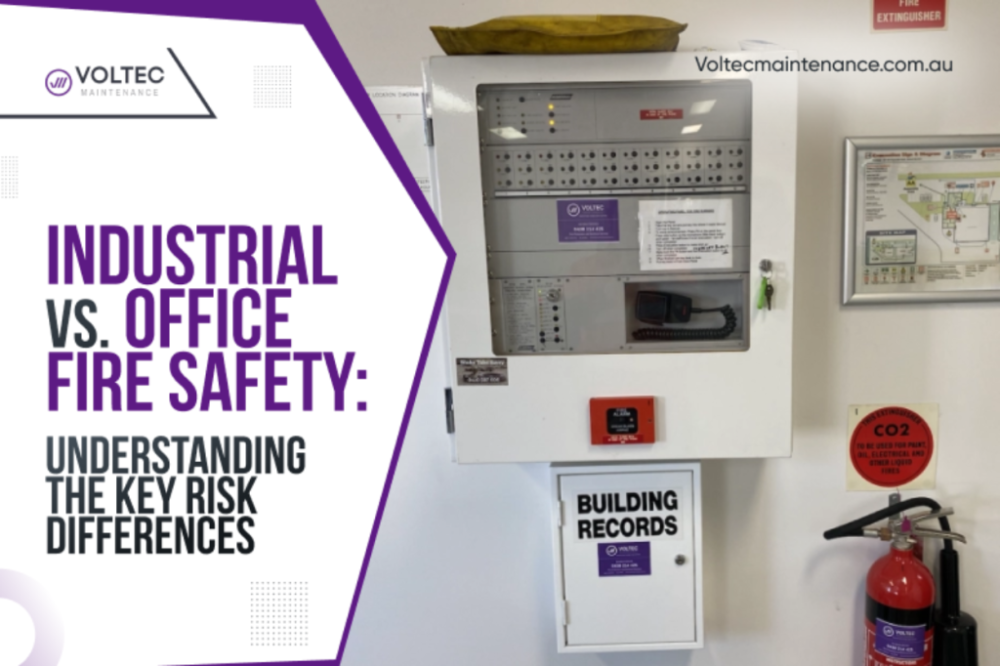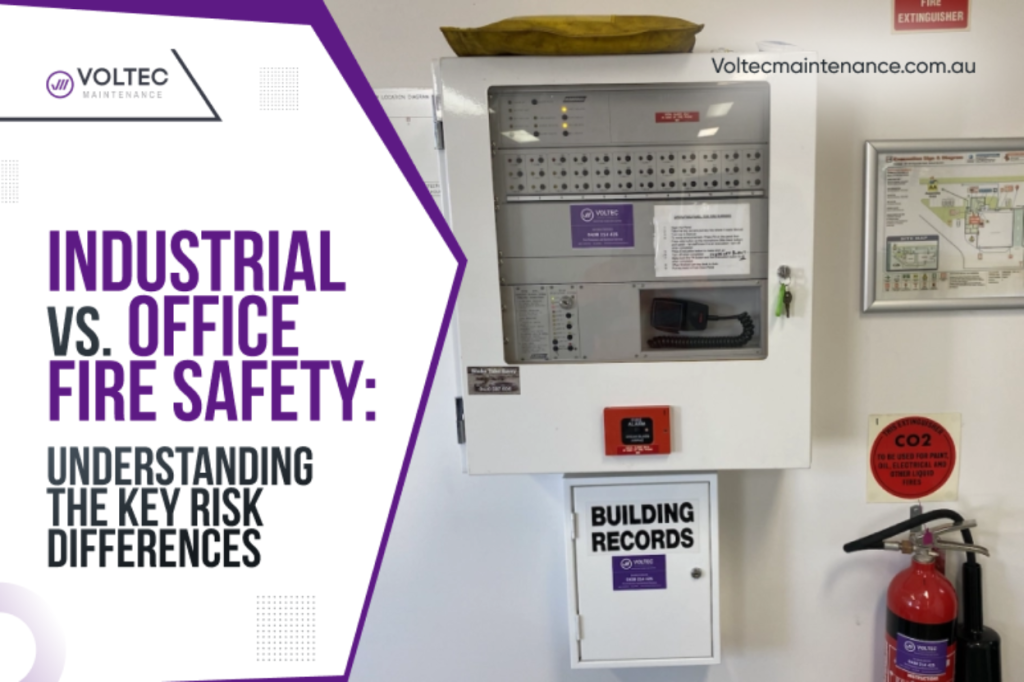Industrial vs. Office Fire Safety: Understanding the Key Risk Differences
Fire safety isn’t one-size-fits-all. While every commercial space must adhere to fire safety regulations, the risks—and the required preventive strategies—differ significantly between industrial sites and office environments. Understanding these differences is essential for maintaining compliance, protecting property, and, most importantly, saving lives.
Key Differences in Fire Risks
1. Nature of Equipment and Operations
Industrial sites often house heavy machinery, welding equipment, flammable liquids, or combustible dust—all of which significantly increase fire risk. Offices, on the other hand, are more likely to experience electrical faults from overloaded power boards, kitchen mishaps, or malfunctioning equipment like printers and air conditioning units. In both settings, regular Fire Equipment Servicing is essential to ensure all safety systems are fully operational in case of an emergency.
2. Hazardous Materials
Many industrial facilities work with or store chemicals, oils, or gases that are classified as hazardous. A small ignition source can trigger an explosive chain reaction. Office spaces rarely store such materials, meaning the risk is lower, but not absent. Every environment must be evaluated based on what is stored and where.
3. Occupant Density and Layout
Offices typically have a higher density of staff and visitors in smaller, enclosed areas. This increases the urgency for early detection and rapid evacuation. In contrast, industrial facilities often have more space per person but may involve complex layouts, high ceilings, or outdoor structures, making evacuation and fire suppression more challenging.
4. Fire Detection & Suppression Requirements
Industrial facilities may require advanced systems such as gas-based suppression, heat detectors, and flame-proof fixtures. Offices generally rely on interconnected smoke alarms, sprinkler systems, and fire extinguishers. However, even these systems need to be tested regularly to remain effective, hence it is important to opt for the Servicing of Fire Extinguishers or more such systems by experts.
5. Maintenance and Compliance
Both environments are legally obligated to comply with Australian Standards such as AS1851 for routine service of fire protection systems. However, due to their high-risk nature, industrial facilities often require more frequent inspections and a broader range of fire servicing by experts.
A Tailored Fire Safety Strategy is Non-Negotiable
The takeaway? No matter if you're managing an office in Townsville or an industrial site nearby, your fire safety plan should involve trusted experts in Commercial Electrician Services.
Ignoring these differences could lead to overlooked risks, failed compliance audits, or even catastrophic outcomes during an actual emergency.
Quick FAQs
Choose Voltec’s Expert Solutions
At Voltec Maintenance, we don’t just provide standard fire safety services—we tailor our inspections, testing, and compliance support to the unique needs of your business. Our licensed technicians understand the distinct fire safety demands of both industrial and office environments. From comprehensive fire system audits to routine testing and emergency lighting checks, we ensure you're fully covered.
Protect your people, assets, and operations—choose Voltec for proactive, professional Fire Protection Services in Townsville and beyond.
Read Other Blogs
-
 5 Checks to Know If Your Exit Lights Would Work During an Emergency
5 Checks to Know If Your Exit Lights Would Work During an Emergency -
 How Professional Smoke Alarm Servicing Minimises Workplace Disruptions?
How Professional Smoke Alarm Servicing Minimises Workplace Disruptions? -
 How Routine RCD Testing Prevents Downtime and Compliance Issues?
How Routine RCD Testing Prevents Downtime and Compliance Issues? -
 The Role of Smoke-Alarm Systems for Business Continuity in Healthcare Facilities
The Role of Smoke-Alarm Systems for Business Continuity in Healthcare Facilities -
 How Poorly Maintained Exit Lights Undermine Emergency Evacuation Efficiency?
How Poorly Maintained Exit Lights Undermine Emergency Evacuation Efficiency? -
 How Expert Thermal Imaging Services Can Keep Businesses Running In Hostile Environments?
How Expert Thermal Imaging Services Can Keep Businesses Running In Hostile Environments? -
 Stand-Alone Emergency Alarms: A Smart Investment in Business Continuity and Compliance
Stand-Alone Emergency Alarms: A Smart Investment in Business Continuity and Compliance -
 Why Warehousing Leaders Choose Professional Smoke Alarm Systems?
Why Warehousing Leaders Choose Professional Smoke Alarm Systems? -
 Why Public Premises Can’t Afford to Ignore Emergency Exit Lighting?
Why Public Premises Can’t Afford to Ignore Emergency Exit Lighting? -
 Why Every Business Should Prioritise Cleaning Emergency Luminaires & Exit Signs?
Why Every Business Should Prioritise Cleaning Emergency Luminaires & Exit Signs?

